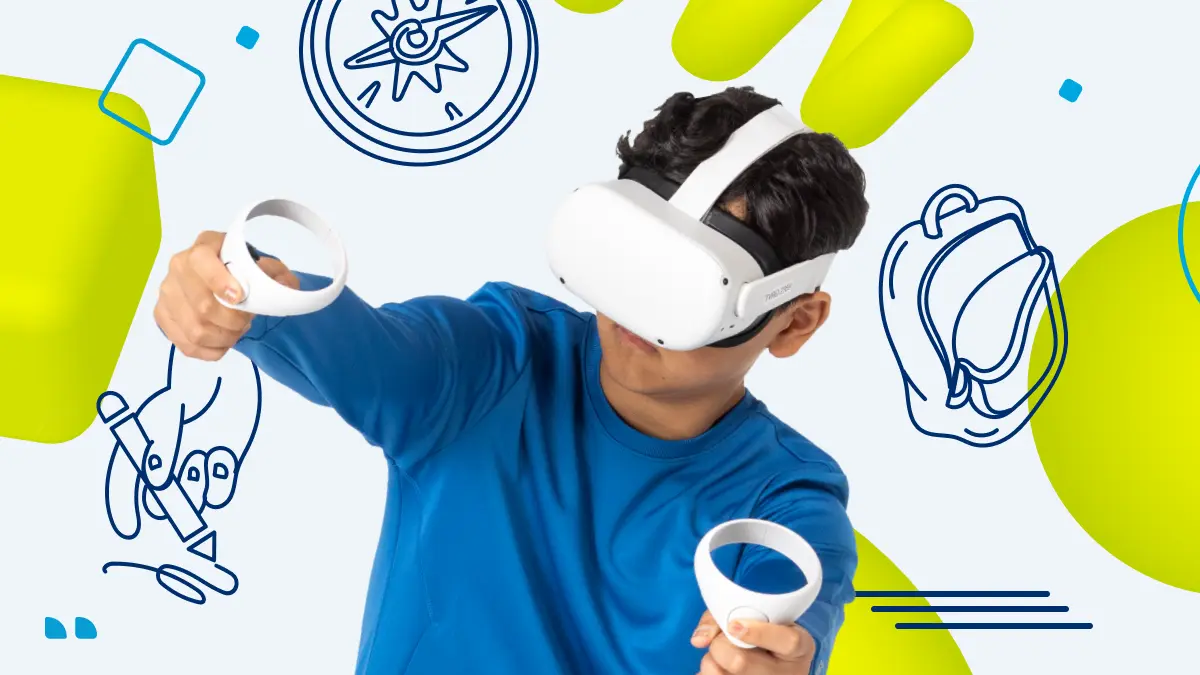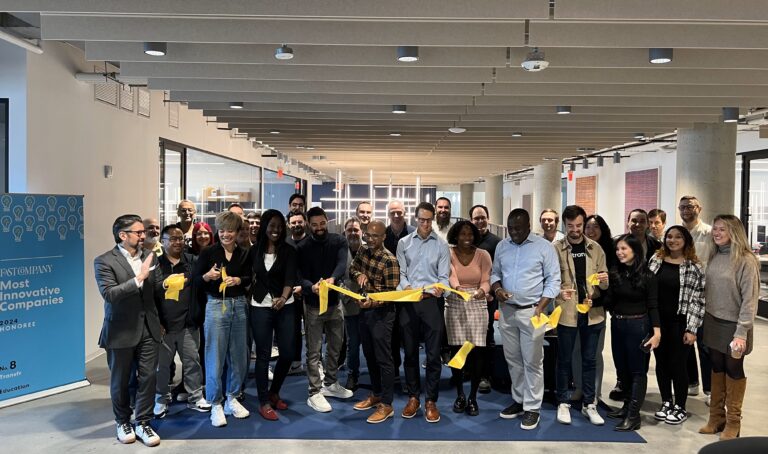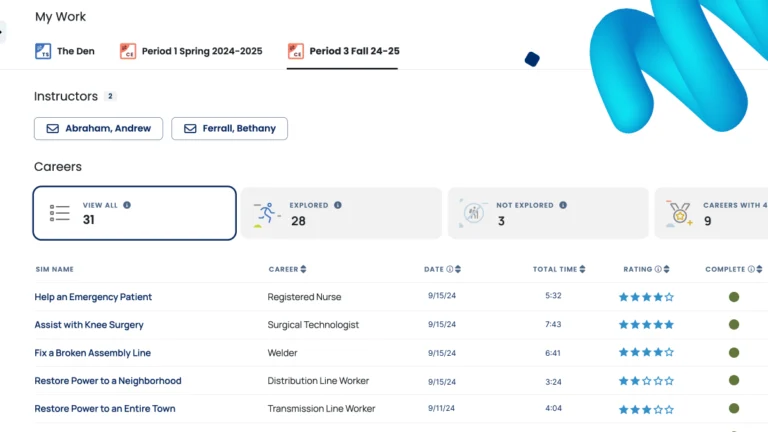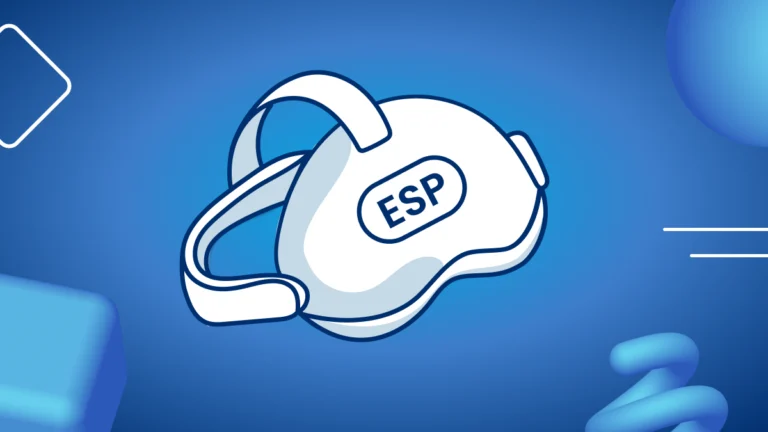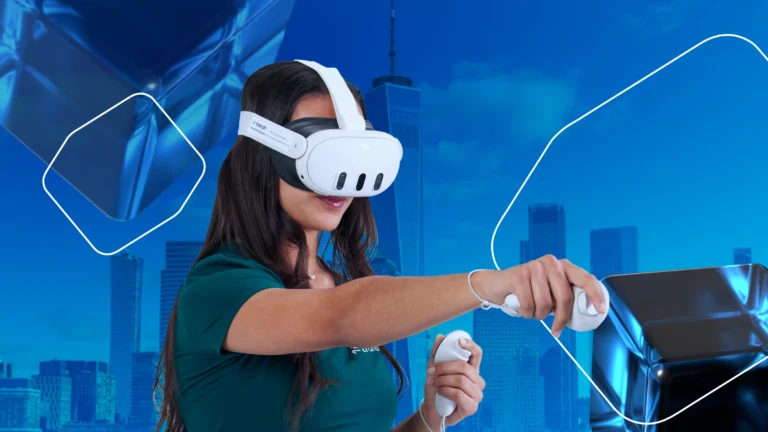K12 schools are where the foundations of future career success are built. Through a variety of career exploration activities, combined with guidance from instructors and counselors, and innovative CTE programs, young learners can build their own unique pathways to career success.
Virtual reality (VR) presents unique opportunities to help students learn about the wide variety of career options available to them, especially in non-college-degree tracks. Immersive VR experiences are a uniquely engaging way to give them a first-person look at what it’s like to live a day in the life of a particular occupation. Simulated hands-on training in VR allows them to safely develop confidence and competence in the skills they’ll need for career success. The sense of accomplishment that goes along with skill acquisition often fuels their visions of career success.
VR is highly engaging
Not every young student is interested in the latest technology, but VR often captures their imaginations. It’s not uncommon to hear that students who aren’t very interested in career education change their behaviors when presented with the opportunity to investigate different jobs in VR.
“Students LOVE Transfr VR,” says Sarah Jane Walker, CTE Counselor at Tyler Independent School District in Texas. “When I arrive at school with our headsets, I get a cheer from the class. It’s something students really look forward to!”
Job markets in the US are evolving rapidly and students are often unaware of the career options available to them or how to secure these well-paying jobs in high-growth industries. While guest speakers and field trips to work sites are compelling experiences, they can be expensive and difficult to scale. Immersive VR career exploration brings the workplace to the school — even in fields that students might not be very knowledgeable about.
“Transfr allows students to explore lots of different occupations to get them to think outside of the box,” says Diana Ollis, a Career Development Coordinator a Union County Public School in North Carolina. “Students need to realize that there are lots of opportunities out there, not just what you see in the community at home.”
West Alabama Works takes Transfr headsets on the road for their Worlds of Work events, giving 8th and 9th graders a chance to dig into VR experiences of an array of occupations. These events boosted CTE enrollment by almost 20% when they were initially rolled out. In West Virginia, Workforce Development Board Mid-Ohio Valley’s summer CTE Explore Camp takes 9th and 10th graders through a week of career exploration activities, including VR time. Again, VR has huge potential to give students insights into careers they may not have considered:
“I like showing people how to use the VR to try jobs they wouldn’t have an opportunity to do otherwise,” says Russell Spencer, a VR Tech who helped facilitate the camp. “This allows them to experience jobs without needing access to the costly real equipment or having to travel to where the equipment is.”
VR skills training: Safety and cost savings
Beyond career exploration, learning new skills in VR is also uniquely engaging in that it allows students to start actively building skills almost right away — as opposed to sitting through lengthy classroom lectures or book-learning stints before picking up a tool. The excitement experienced during VR learning is referred to as “the joy of doing” by Keith Lyle, PhD, Transfr’s Director of Learning Sciences.
“This joyful reaction seems to be driven in part by how easily the sims capture the learner’s attention,” Keith says.
VR skills training also offers unique safety benefits for all learners — especially K12 students. Learning any skilled trade requires an element of risk at various points during the learning journey, however, starting that process in VR lets students develop core job skills in a virtual setting that’s free from the traditional risks of injury.
“Technology has evolved,” says Johnnie Parker, a seasoned electrician and instructor with decades of experience in the field. “Today’s students have new options that can keep them safer as they develop the skills they’ll need in the field.”
Students can work on cars and other vehicles, handle dangerous or costly materials, and work with flames and sharp objects in VR without the risk of harm to themselves or others or damaging real-world equipment or property. However, the safety skills they learn in the virtual setting translate to the real world. Their virtual coach guides them every step of the way, making sure that they are taking the proper precautions and providing helpful reminders when needed.
Virtual coaches provide calm, consistent instruction across every interaction, empowering human instructors to give students more personal attention while other students use VR. Present VR systems cannot replace human instructors and real-world, hands-on training to reinforce the skills learned in VR — instead, VR skills instruction augments human educators, giving them another unique and powerful tool to help prepare students for the working world.
VR training inspires hope for the future
A growing body of research is showing time and time again that students really enjoy VR learning. But VR’s benefits go much deeper — allowing learners to see possibilities for the future they maybe hadn’t considered. We know students “can’t be what they can’t see…” The sense of hope and connection VR offers is both incredibly unique and hard to quantify.
Living in an increasingly complex world of mounting uncertainty, it’s natural for young people to wonder what their futures will look like. Instructors, counselors, and trade professionals need to be realistic with young learners about the challenges they’ll face. That being said, there are amazing opportunities out there for the coming generations in a variety of fields, especially trades that don’t require a university degree to get started.
Time spent in VR, coupled with meaningful conversations with professionals and educators, can help students plan effective career pathways towards well-paying jobs in high-growth industries. It can also give them the spark they need to the steps they need to take to turn this plan into reality:
“Something we talk about at Transfr is how these experiences give learners hope,” says Amanda Longtain, Director of Programs at Transfr. “Even though hope is hard to measure, it’s literally what pushes us forward.”
